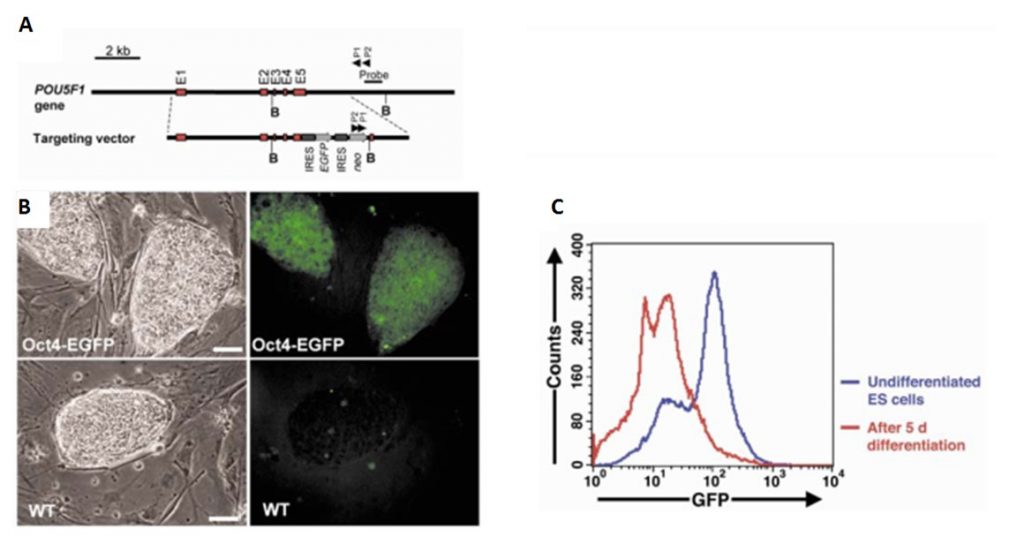 Culture of many human cell types is available on demand comprising both adherent (Hela,…) and soluble (Raji, THP1,…) cell lines.
Culture of many human cell types is available on demand comprising both adherent (Hela,…) and soluble (Raji, THP1,…) cell lines.
In addition, we have optimized procedures for feeder-free and albumin-free culture of human embryonic stem cells (hESC). This commercially available OCT4–eGFP knock-in hESC line (WiCell Research Institute, Madison, WI, USA) is an OCT4 reporter hESC line that was developed in 2003 by means of homologous recombination (Fig. A) whereby the transcription of enhanced green fluorescent protein (eGFP) is regulated by the promoter region of the pluripotency transcription factor OCT4. The pluripotent status of hESCs can be verified in this hESC line by means of eGFP detection; a decrease in eGFP represents a decrease in OCT4 expression and, thus, a decrease in pluripotency, indicating that the hESC line is differentiating. This process can be monitored by both fluorescence microscopy (Fig. B) or flow cytometry (Fig. C).
Starting directly from blood, purification of lymphocytes is easily obtained through Ficoll density gradiënt centrifugation. Prior to any other characterization step of cell cultures or biological samples (harvesting of cells and subsequent proteomics or genomics analysis, flow cytometry, laser capture microdissection, qPCR,…) cells can be enriched or depleted for certain cell types. This can be achieved through magnetic-activated cell sorting (MACS).